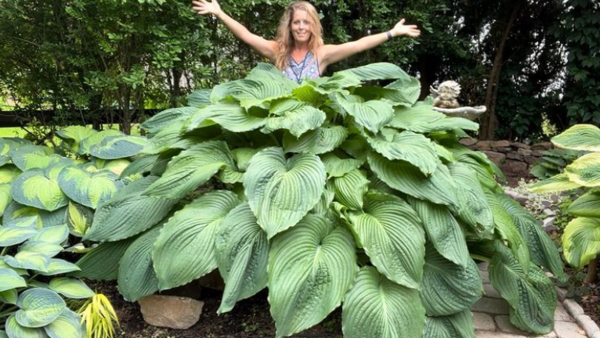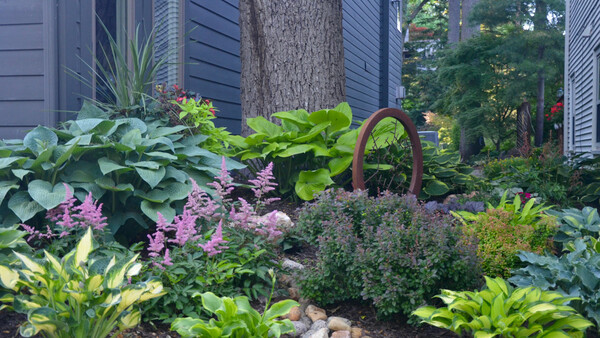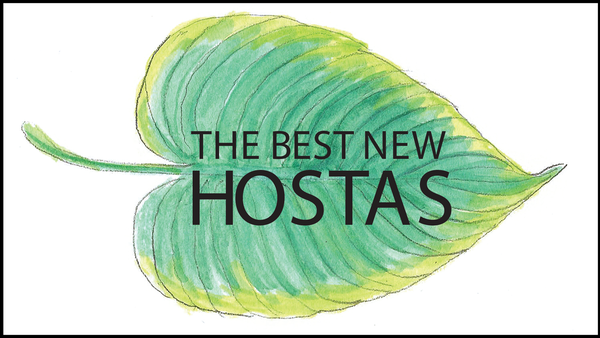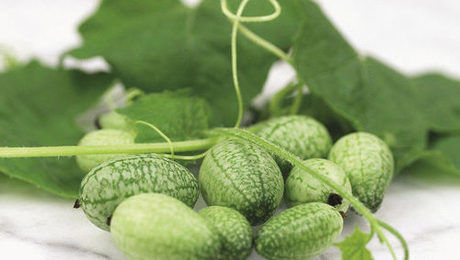
With thousands of different hosta varieties on the market and new ones popping up each year, the dazzlers sometimes get lost among the duds. But every now and then, I come across a hosta so spectacular that it literary stops me in my tracks.
If you’ve yet to jump on the crazy-over-hostas bandwagon, these 10 eye-catching cultivars might just change your mind. Each is a standout in its own right. And they come in all shapes, sizes, and colors. Despite their differences, however, they all have one thing in common: Not one of these hostas will fade into the shadows.
Expert growing guide for healthy hostas
Hostas, which mostly thrive in Zones 3 to 9, are about as easygoing as they come, but that doesn’t mean that they are entirely without standards. If you want lust happy plants follow these guidelines:
Give them morning light
It’s a myth that hostas are shade loving; they are merely shade tolerant. Most hostas prefer three to four hours of morning rays, while some need up to six. Avoid, however, harsh afternoon sun, which will cause leaves to fade in color and brown around the edges.

Dig a million-dollar hole
I usually dig a hole twice as wide as the container and then mix compost into the excavated soil before spreading it around the plant.
Work miracles with compost
A bed with good water retention is key. Hostas thrive in highly organic, moist, well-drained soil. Clay soil enhanced with compost works amazingly well due to its water-holding capacity. Sandy soil needs the most help because it leaches moisture quickly. To remedy that situation, simply add more organic matter; I swear by well-decomposed horse manure, but humus or household compost works, too. A thin 1- to 2-inch-deep layer of mulch will also help keep roots moist.
Hydrate
You can’t water hostas too often, assuming there’s proper drainage. Regularly give them a good morning soaking, striving for at least 1 inch of water per week.
Let them grow
Late summer is the best time to divide hostas. You can split miniature to medium-size hostas every four to five years. But I avoid dividing my large and giant hostas because they take up to six years to regain their domineering size. The only time hostas need dividing is when they begin showing signs of decline due to root competition.
Favorite Types of Hostas
‘Blue Mouse Ears’

Size: 8 inches tall and 18 inches wide
Shade tolerance: Partial shade
*Slug resistant
Petite, rubbery leaves in a soft shade of blue make the award-winning ‘Blue Mouse Ears’ easy to love. Low growing and perfectly symmetrical, this adorable miniature hosta blooms profusely in midsummer, sending up stems that peak at just 1 foot tall.
‘Climax’

Size: 2 feet tall and 4 feet wide
Shade tolerance: Partial shade
*Slug resistant
‘Climax’ requires some patience, but it is well worth the wait. On average, this cultivar takes four years to become an attention grabber. As variegated hostas mature, the showy rim on their leaves widens; the gold edge of a young ‘Climax’ is only 1/4 inch thick, but after a few years, this edge expands to 1 inch.
‘White Christmas’
Size: 15 inches tall and 35 inches wide
Shade tolerance: Bright partial shade
I once made the mistake of planting a ‘White Christmas’ hosta in full shade, and it shriveled up soon after. Because only the green portions of a leaf can photosynthesize, white-foliage hostas require more sunlight than greener varieties. ‘White Christmas’ prefers a six-hour-long daily dose of morning rays and will slowly get greener as summer progresses.
‘Striptease’
Size: 20 inches tall and 45 inches wide
Shade tolerance: Bright partial shade
A unique leaf pattern sets this hosta apart. Named for the peeking white strip on its leaves, ‘Striptease’ is a fast grower with a sturdy shape and lavender flowers. This hosta tolerates heat better than most, making it an excellent choice for gardeners in USDA Hardiness Zone 9.
‘Dawn’s Early Light’

Size: 20 inches tall and 3 feet wide
Shade tolerance: Partial shade
*Slug resistant
Hostas are just like people: the older they get, the more they wrinkle. ‘Dawn’s Early Light’ is no exception. Mature plants have heavily puckered leaves, which emerge a brilliant yellow in early spring and gradually turn lime green later in the season.
‘Dick Ward’
Size: 18 inches tall and 40 inches wide
Shade tolerance: Bright partial shade
*Slug resistant
The once-elusive ‘Dick Ward’ hasn’t always been so affordable. Hosta enthusiasts used to pay top dollar for this award-winning plant. The sharp contrast of its puckered gold centers and dark green edges provides a spectacular show in late summer. For intense color, situate ‘Dick Ward’ in a spot that gets four to six hours of morning sun.
‘First Frost’

Size: 14 inches tall and 35 inches wide
Shade tolerance: Partial shade
*Slug resistant
This just might be my favorite hosta because it never lacks luster. ‘First Frost’ emerges in early spring with crisp golden edges that fade to a snowy white soon after the first of July. With its sturdy shape and pest resistance, this beauty makes a reliable centerpiece in a bed and even holds up to autumn’s first couple of frosts.
‘Orange Marmalade’

Size: 19 inches tall and 45 inches wide
Shade tolerance: Bright partial shade
A relatively new hosta that’s quickly gaining popularity, ‘Orange Marmalade’ emerges in spring with bright yellow foliage trimmed in dark green. As the leaves mature, their centers take on a subtle orange tint. To keep the dramatic color going until fall, give this sun-tolerant hosta four to six hours of morning rays daily.
‘Praying Hands’

Size: 16 inches tall and 2 feet wide
Shade tolerance: Partial shade
*Slug resistant
Named “Hosta of the Year” in 2011 by the American Hosta Grower’s Association, ‘Praying Hands’ sports one-of-a-kind twisted leaves with skinny cream-colored rims. This hosta’s vertical shape means that the plant works exceptionally well in containers or plants in beds with miniature hostas at its feet.
‘Deep Blue Sea’
Size: 15 inches tall and 34 inches wide
Shade tolerance: Full to partial shade
*Slug resistant
‘Deep Blue Sea’ is the hottest item at my nursery in late summer, chiefly because it’s the only blue hosta that is still blue. Many blue hostas turn green as the growing season progresses because the wax coating responsible for their blue color wears off. But ‘Deep Blue Sea’ stays blue all season thanks to those glorious deeply puckered, cupped leaves.
—John O’Brien is the owner of O’Brien Nurserymen, which sells more than 1,100 hosta varieties, in Granby, Connecticut.
Photos, except where noted: courtesy of Kathie Sisson





















Comments
My hostas are a delectable meal for voles. They also have an appetite for oak leaf hydrangeas, japanese forrest grass, mexican petunias.... sigh
I know - I just saw a bit of my house ears scattered and chewed!!
Hostas are tricky for design because they grow in so many shapes and sizes that spacing becomes a factor to consider. I admire those gardens where people have had the self discipline not to overplant allowing the full drapey look of a hosta to make itself spectacular. I, on the other hand have big varieties competing now with the shorties or out performing the peonies. Don't forget the self seeders. Excellent for moving around to places of prominence.
My hostas thrive best in pots. I add fertilizer every spring and they come back, huge and healthy every year.
I have a problem, my hostas are being infested with slugs and making holes in everyone of its leaves, first was just in one of them the white and green one and now is moving to my dark green, please help me
Try putting a flower pot saucer 1/2 filled with beer near the plants, check each morning and discard the dead slugs and replace with fresh beer until slug infestation has ceased.
I never did gardening in my whole life but now after reading your article I seem to be expert in gardening because you shared incredible things regarding gardening and how to take care of plants and trees. The topics mill allowed me to prepare all my research papers on time on gardening.
Log in or create an account to post a comment.
Sign up Log in